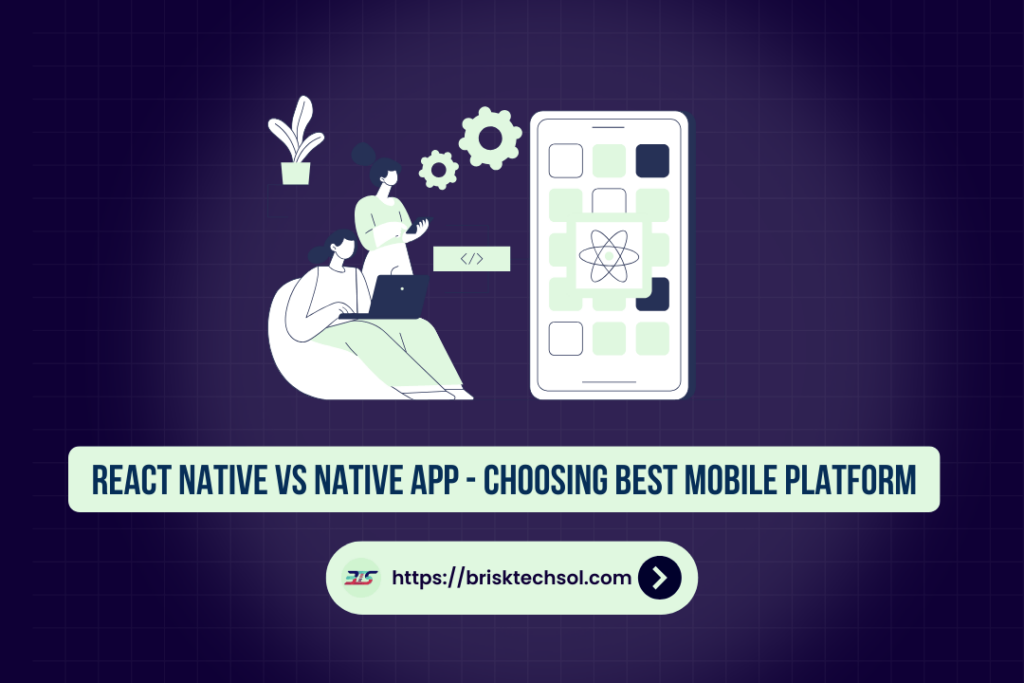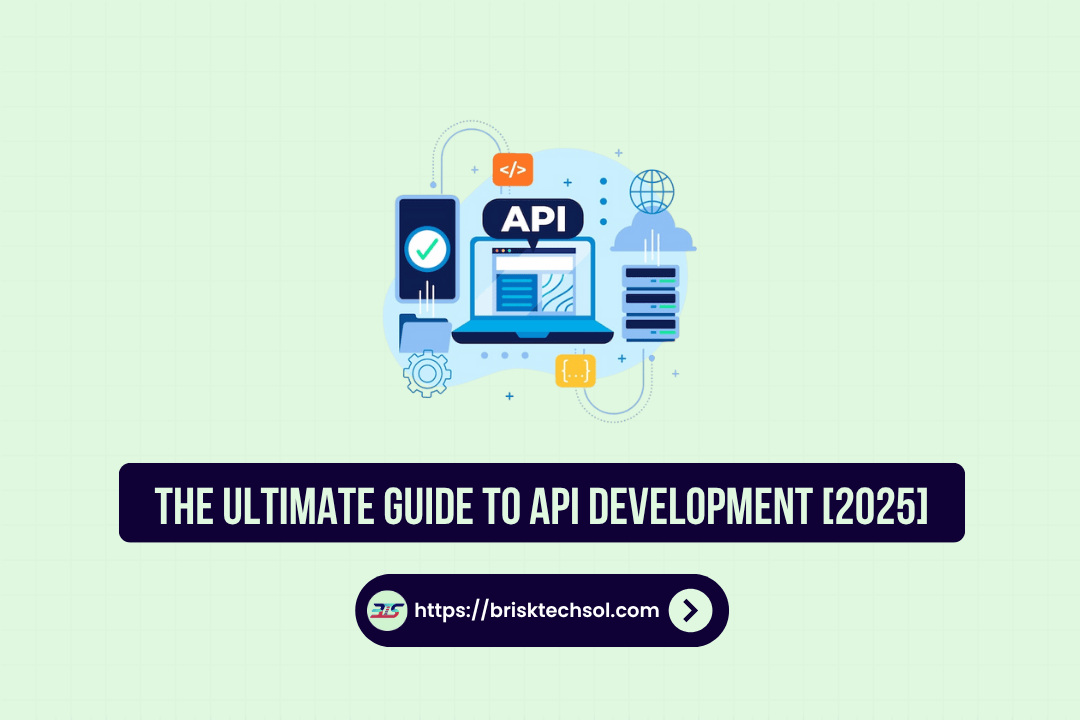Imagine launching an app that feels effortlessly smooth on both iOS and Android. With React Native, you can build once and deploy everywhere, saving time and cost, while native development offers exceptional performance and deeper integration. In this guide, we explore these two approaches in simple terms, helping you decide which path best suits your project’s needs effectively in 2025.
Overview of Mobile App Development Approaches
Mobile app development typically follows two major paths: native development and cross-platform development using frameworks like React Native.
Native App Development
Native app development involves creating separate applications for each mobile operating system—most commonly iOS and Android. These apps are written in platform-specific programming languages, such as Swift or Objective-C for iOS and Kotlin or Java for Android.
Key Characteristics:
- Performance: Apps are optimized for a specific platform, offering the best possible performance.
- User Experience: Native components and APIs provide a seamless, familiar user experience.
- Access to Features: Full access to all device hardware and software features.
- Development Complexity: Requires multiple codebases, one for each platform.
React Native Development
React Native is an open-source framework developed by Facebook that allows developers to build mobile apps using JavaScript and React. With React Native, you write one codebase that is compiled into native components for both iOS and Android platforms.
Key Characteristics:
- Cross-Platform Compatibility: One codebase for both iOS and Android reduces development effort.
- Development Speed: Reusable components and hot reloading accelerate iterations.
- Cost Efficiency: Lower development and maintenance costs due to shared code.
- Near-Native Performance: Leverages native APIs to deliver performance close to native apps.
- Community Support: A robust ecosystem of libraries and active community resources.
Advantages and Disadvantages
Choosing between native and React Native development depends largely on the project’s requirements and priorities. Here, we detail the pros and cons of each approach.
Advantages of Native App Development
Performance and Responsiveness:
- Optimized Performance: Native apps run faster because they are built specifically for the operating system.
- Smooth Animations: Superior graphical performance and smooth transitions.
User Experience:
- Platform-Specific UI/UX: Native development offers the best integration with device-specific features and design guidelines.
- Consistent Experience: Users benefit from interfaces that feel “at home” on their device.
Access to Device Features:
- Full Hardware Access: Direct integration with device sensors, cameras, and other native functionalities.
- Advanced Capabilities: Better support for advanced features such as augmented reality, complex animations, and heavy computations.
Security:
- Enhanced Security: Native apps can leverage robust, platform-specific security measures.
Disadvantages of Native App Development
Cost and Time:
- Multiple Codebases: Requires separate development for each platform, increasing costs and development time.
- Maintenance Overhead: Updating multiple versions of the app adds complexity and expense.
Resource Intensive:
- Expertise Required: Requires specialized developers for each platform.
- Longer Time-to-Market: Development cycles can be extended due to the need for parallel development on different platforms.
Advantages of React Native Development
Efficiency and Speed:
- Single Codebase: Develop once for both iOS and Android, reducing development time.
- Rapid Iteration: Hot reloading allows developers to see changes in real time, speeding up the debugging process.
- Cost Savings: Fewer resources needed compared to building two separate native apps.
Flexibility:
- Reusable Components: Modular components can be reused across projects, further reducing development time.
- Community Ecosystem: A large ecosystem of libraries and plugins accelerates development and reduces the need for custom coding.
Near-Native Performance:
- Bridging Native Modules: While not fully native, React Native leverages native components to deliver performance that is close enough for many use cases.
Collaboration and Maintenance:
- Easier Maintenance: A single codebase simplifies updates and bug fixes.
- Streamlined Workflow: Developers familiar with JavaScript can quickly adopt React Native, enhancing team collaboration.
Disadvantages of React Native Development
Performance Limitations:
- Bridge Overhead: The communication between JavaScript and native modules can sometimes introduce latency.
- Complexity in High-Performance Scenarios: For apps requiring extremely high performance (e.g., intensive gaming or heavy animations), native development may still be preferable.
Platform-Specific Challenges:
- Native Feature Gaps: Some advanced native features may require additional native code, negating some of the time and cost savings.
- UI Consistency Issues: Achieving a truly native look and feel across both platforms can sometimes require extra effort and custom adjustments.
Learning Curve:
- JavaScript and React Expertise: While many developers are familiar with JavaScript, mastering React Native’s nuances, particularly for integrating native modules, can be challenging for beginners.
Detailed Comparison: React Native vs Native Development
This section compares the two approaches across various critical dimensions.
3.1 Development Time and Cost
Native Development:
- Requires separate codebases for each platform.
- Increased development time due to parallel development efforts.
- Higher overall cost due to the need for specialized teams.
React Native:
- Single codebase for both iOS and Android.
- Shorter development cycles due to reusability of components.
- Lower cost, especially for startups and small-to-medium enterprises.
Bullet Points:
- Cost Savings: React Native typically reduces labor and maintenance costs.
- Time Efficiency: Accelerated time-to-market with a unified codebase.
- Resource Allocation: Fewer developers required for cross-platform development.
3.2 Performance and User Experience
Native Development:
- Provides the best performance for resource-intensive applications.
- Offers superior integration with platform-specific UI elements.
- Delivers a highly responsive, native user experience.
React Native:
- Near-native performance suitable for most applications.
- Uses native components for rendering, but may require optimizations for high-performance needs.
- Provides a consistent user experience across platforms with some trade-offs.
Flexibility and Customization
Native Development:
- Complete freedom to customize every aspect of the app.
- Direct access to all native APIs and features.
- Best suited for apps with complex, platform-specific requirements.
React Native:
- High flexibility with reusable components and modular design.
- Some limitations in accessing certain native features without additional coding.
- Ideal for rapid development and iterative improvement.
Ecosystem and Community Support
Native Development:
- Mature ecosystems for iOS (Swift, Objective-C) and Android (Kotlin, Java).
- Extensive documentation and established best practices.
- Smaller, specialized communities for each platform.
React Native:
- Vast and active community with numerous open-source contributions.
- Rich ecosystem of libraries, plugins, and tools.
- Constant updates and improvements driven by community involvement.
Cost Analysis and Budgeting
Cost is one of the most significant factors in choosing between native and React Native development.
Cost Components in Native Development
- Development Costs: High, due to multiple codebases and specialized developers for each platform.
- Maintenance Costs: Ongoing updates and bug fixes for separate platforms increase overall expenses.
- Time-to-Market: Longer development cycles can delay revenue generation.
Cost Components in React Native Development
- Development Costs: Lower, thanks to a single codebase covering multiple platforms.
- Maintenance Costs: Simplified updates across platforms reduce long-term expenses.
- Resource Efficiency: Fewer developers are needed, resulting in cost savings.
Average Cost Estimates
While costs vary based on project complexity, here are some rough estimates:
- Simple App:
- Native: $20,000 to $40,000 per platform
- React Native: $30,000 to $60,000 for both platforms
- Medium Complexity App:
- Native: $50,000 to $100,000 per platform
- React Native: $70,000 to $150,000 for both platforms
- Enterprise-Level App:
- Native: $100,000 to $300,000 per platform
- React Native: $150,000 to $400,000 for both platforms
Developer Experience and Learning Curve
The ease with which your development team can adopt a framework is crucial.
React Native Learning Curve
- Familiarity: Many developers already know JavaScript and React, reducing the learning curve.
- Community Resources: Extensive tutorials, courses, and forums help new developers get up to speed.
- Tooling: Hot reloading and robust debugging tools accelerate development and iteration.
Native Development Learning Curve
- Platform-Specific Skills: Developers need to learn Swift/Objective-C for iOS or Kotlin/Java for Android.
- Separate Codebases: Managing multiple codebases requires specialized skills and coordination.
- Mature Ecosystems: While well-documented, each platform has its own set of complexities.
Integration and Ecosystem Considerations
Integrating with third-party services and existing systems is a key part of app development.
React Native Integration
- Third-Party Libraries: A vast array of plugins and modules simplifies integration with APIs, databases, and other services.
- Native Module Bridging: Allows developers to write custom native code when needed.
- Ecosystem Flexibility: React Native’s flexibility supports integration with modern CI/CD tools and development workflows.
Native Development Integration
- Platform-Specific APIs: Direct access to all native features allows for deep integration with hardware and software.
- Robust Tooling: Mature development environments offer comprehensive support for debugging and integration.
- Legacy Systems: Native development often aligns better with existing enterprise systems and legacy technologies.
Security and Compliance
Security is a critical factor in mobile app development, and both approaches have their own considerations.
Security in React Native
- Code Obfuscation: Protects your JavaScript code from reverse engineering.
- Native Bridges: Secure integration of native modules ensures that sensitive operations can be handled securely.
- Community-Driven Updates: Regular updates from the community help address vulnerabilities promptly.
Security in Native Development
- Platform-Specific Security: Native apps have direct access to platform-level security features.
- Advanced Encryption: Leverage advanced encryption and secure storage mechanisms provided by the platform.
- Compliance: Native development may simplify meeting industry-specific compliance requirements.
Key Takeaways:
- Single vs. Multiple Codebases:
React Native uses one codebase for both iOS and Android, reducing development time and cost, while native development requires separate codebases for each platform. - Performance:
Native apps generally offer superior performance and full access to device-specific features, whereas React Native delivers near-native performance that suffices for most applications with proper optimizations. - Cost Efficiency:
React Native is typically more cost-effective due to reduced labor and maintenance costs, making it attractive for startups and SMEs, while native development tends to be more expensive. - Development Speed:
The unified codebase and hot reloading in React Native accelerate development cycles, enabling faster time-to-market compared to native approaches. - Customization and Flexibility:
Native development provides greater customization and deep integration with platform-specific APIs, making it ideal for high-performance, complex applications. - Community and Ecosystem:
React Native benefits from an extensive, active community, offering a wealth of libraries and plugins, whereas native development has mature ecosystems for each platform. - Integration and Maintenance:
React Native simplifies maintenance with a single codebase, whereas native development requires parallel updates across platforms, increasing complexity. - Learning Curve:
React Native is generally easier for teams familiar with JavaScript, while native development requires proficiency in platform-specific languages like Swift, Objective-C, Kotlin, or Java.
FAQs
1. What is the main difference between React Native and native development?
React Native allows for cross-platform development with a single codebase using JavaScript, while native development requires separate codebases for iOS and Android, typically using Swift/Objective-C or Kotlin/Java.
2. Which approach is more cost-effective?
React Native generally offers lower development and maintenance costs due to a unified codebase, while native development tends to be more expensive because of the need for separate teams and codebases.
3. How does performance compare between the two?
Native apps typically deliver the best performance since they are optimized for their specific platform, but React Native offers near-native performance and is suitable for most applications with proper optimization.
4. Can React Native handle complex, enterprise-level applications?
Yes, with proper optimization and integration of native modules, React Native can support complex applications. However, for extremely performance-critical apps, native development might be preferable.
5. What factors should I consider when choosing between React Native and native development?
Consider factors such as project complexity, budget, time-to-market, developer expertise, and the need for platform-specific features or optimizations.









